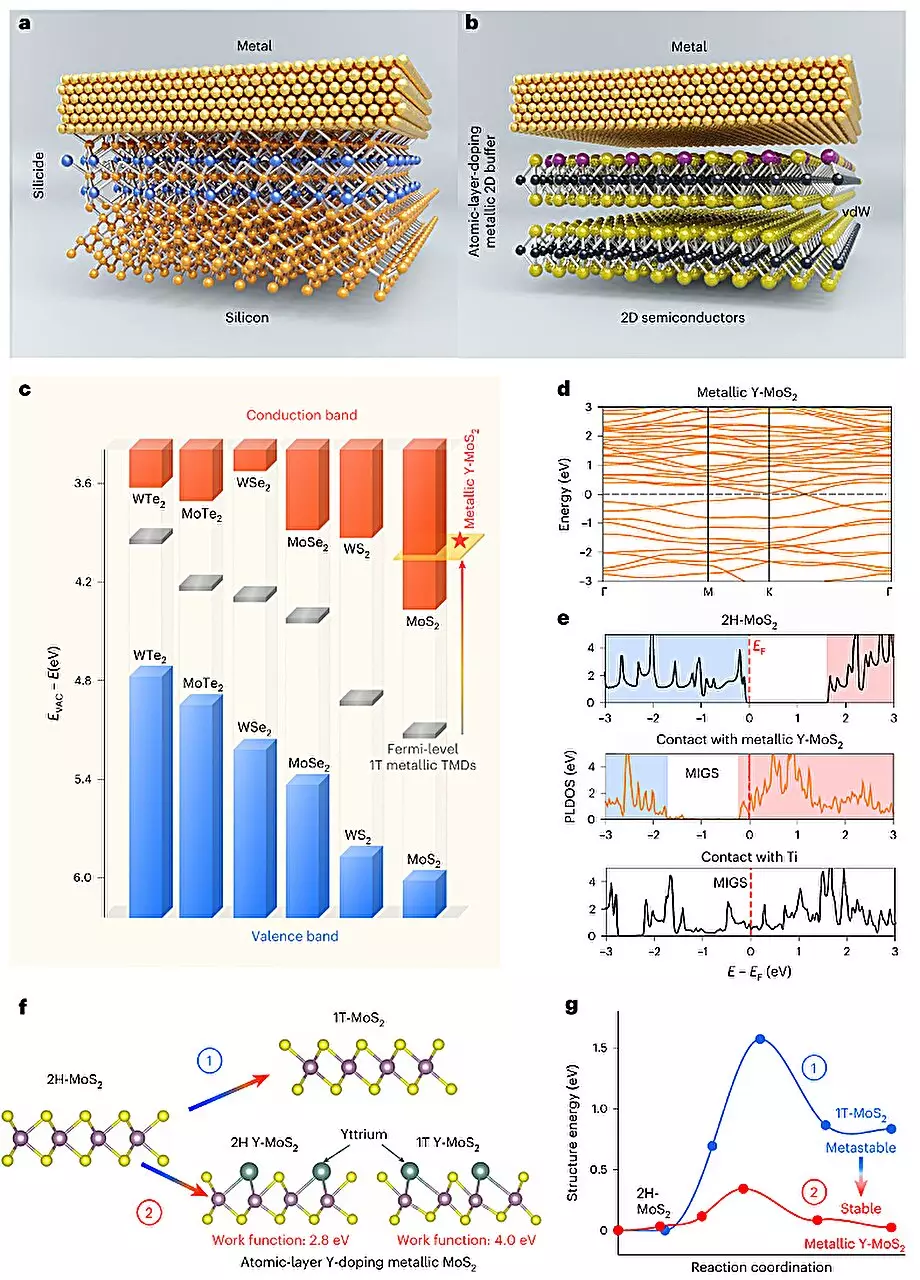Electronics engineers and materials scientists have long been on a quest to find materials that could enhance the performance of electronics beyond the limitations of silicon-based transistors. One promising avenue of exploration has been the development of two-dimensional (2D) semiconductors. These materials possess unique properties that make them ideal candidates for creating high-performing transistors. Notably, 2D semiconductors are atomically thin and exhibit high carrier mobilities, characteristics that could significantly enhance the electrostatic control and ON-state performances of short-channel field-effect transistors (FETs).
Despite their promising attributes, 2D semiconductors face challenges related to high contact resistances attributed to Fermi-level pinning effects. These limitations have hindered the widespread integration of 2D semiconductors in electronic devices, preventing them from realizing their full potential.
Recently, researchers at Peking University and Chinese Academy of Sciences introduced a groundbreaking yttrium-doping strategy to address the issue of Fermi-level pinning effects in 2D semiconductors. Through their innovative approach outlined in a paper published in Nature Electronics, the team succeeded in converting semiconducting molybdenum disulfide (MoS2) into metallic MoS2. This transformation improved band alignment and enabled the fabrication of ohmic contacts for 2D transistors.
The key to the success of the yttrium-doping strategy lies in the plasma-deposition-annealing (PDA) method developed by the researchers. This method involved treating patterned local contact areas with low-power plasma to create active sites, followed by the deposition of a Y/Ti/Au stacked metal layer with thin Y doping. The diffusion of Y atoms into the active sites and subsequent high-temperature annealing in an inert gas environment led to the desirable phase transition in MoS2.
The researchers introduced a novel concept of “rare earth element yttrium doping-induced 2D phase transition,” which showcased the metallization of MoS2 upon applying the yttrium-doping strategy. This phase transition represents a significant breakthrough in achieving doping at the atomic layer limit of 0.5 nanometers, surpassing traditional engineering limitations.
By implementing the yttrium-doping strategy, the research team was able to create ultra-short MoS2-based channel ballistic transistors with excellent performance as ohmic contacts and superior switching capabilities. These advancements pave the way for the development of sub-1 nanometer node chips that offer exceptional performance while consuming less power than conventional chips. The researchers also aim to further enhance their strategy to develop high-quality p-type ohmic contacts suitable for 2D semiconductors in the future.
The introduction of innovative yttrium-doping strategies represents a significant step forward in improving the performance of 2D semiconductors for electronic applications. With continued research and development in this field, we can anticipate a new era of electronics with enhanced functionalities and efficiency.


Leave a Reply